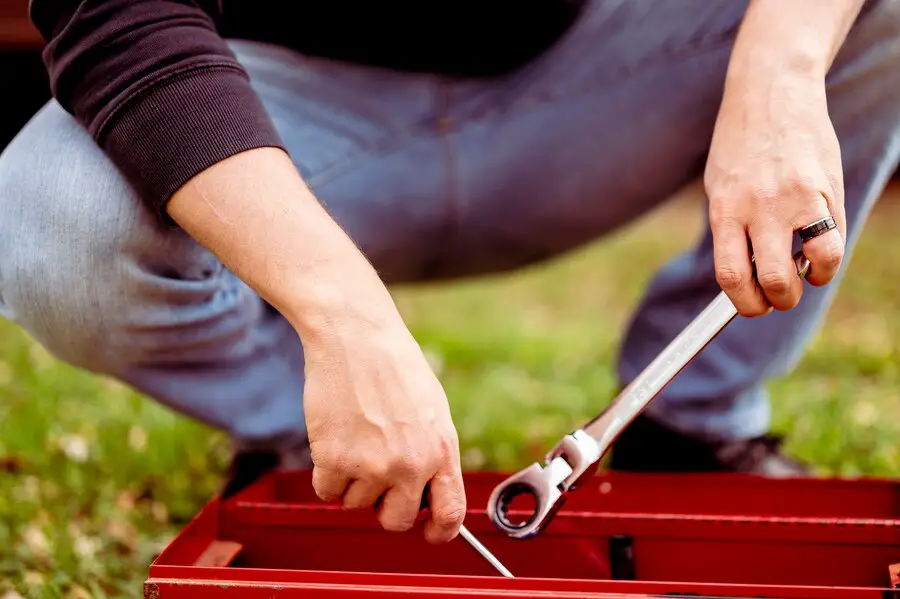
Replacing a lawn mower pull cord is one of those maintenance tasks that many homeowners will encounter at least once. Whether it’s snapped after years of use or simply showing signs of wear and tear, fixing the pull cord yourself can save you time and money compared to taking it to a repair shop. Plus, it’s a simple enough job that you don’t need to be a mechanic to get it done.
In this guide, we’ll walk you through the entire process of replacing your lawn mower pull cord—from understanding when it’s time for a replacement to performing the step-by-step procedure. We’ll also offer some helpful tips and tricks to make the job easier, including safety measures and expert advice for long-term maintenance.
1. Signs It’s Time to Replace the Pull Cord
The pull cord on your lawn mower is essential for starting the engine. Over time, the cord may experience wear and tear or break altogether. Here are some clear signs that indicate it’s time for a replacement:
- The Cord Is Frayed or Worn Out: If the cord is showing signs of fraying, it’s a good idea to replace it before it snaps completely.
- The Cord Doesn’t Rewind Properly: If the cord doesn’t recoil back into the housing or takes multiple attempts to retract, the spring mechanism may be faulty.
- The Cord Breaks: If the pull cord breaks, it’s obviously time for a replacement.
When you notice these issues, it’s important to act quickly to avoid further damage to your mower.
2. Tools and Materials You’ll Need
Before diving into the replacement process, gather all the tools and materials you’ll need to complete the job. Here’s a list:
- Replacement pull cord (make sure to choose one that’s the right length and thickness for your mower)
- Screwdriver set
- Pliers
- Socket wrench
- A pair of scissors or a knife
- Gloves (for protection)
- A clean cloth or rag (for cleaning any debris)
Having everything ready will help you avoid delays during the process.
3. Safety First: Important Precautions
Before you start working on the lawn mower, safety should be your top priority. Here are some basic precautions to follow:
- Disconnect the Spark Plug: This prevents the mower from starting accidentally while you’re working on it.
- Wear Protective Gloves: Gloves will protect your hands from sharp edges and prevent injury during the repair.
- Work in a Well-Lit Area: Adequate lighting is essential, especially for tasks that require attention to small details.
- Take Care Around Springs: Be mindful of the recoil spring inside the starter assembly. These springs can be very tight and may cause injury if they snap back unexpectedly.
4. Step-by-Step Process to Replace the Pull Cord
Now that you’ve gathered your tools and taken necessary precautions, it’s time to begin replacing the pull cord. Follow these simple steps:
Step 1: Disconnect the Spark Plug
This is the first and most important step. Disconnecting the spark plug ensures that the mower won’t start accidentally while you’re working on it. To do this:
- Locate the spark plug wire on the engine.
- Pull the wire off the spark plug and set it aside, ensuring it doesn’t touch any metal parts.
Step 2: Remove the Starter Assembly
Next, you need to remove the starter assembly to access the pull cord. This step may vary depending on the type of mower you have, but here are the general guidelines:
- Use your screwdriver or socket wrench to remove the screws or bolts securing the starter housing to the engine.
- Once the screws are removed, carefully lift off the starter assembly.
You should now have access to the recoil mechanism, which houses the pull cord.
Step 3: Remove the Old Cord
With the starter assembly removed, you’ll be able to see the old pull cord. The next task is to remove it. Here’s how:
- Release Tension from the Recoil Spring: The recoil spring holds tension on the pull cord, so you’ll need to release it carefully. Some mowers have a retaining screw to undo, while others may require you to release the spring from a notch.
- Cut the Old Cord: Using your scissors or knife, cut the old cord where it’s attached to the recoil mechanism.
- Remove the Cord: Once the cord is cut, unwind any remaining portion from the recoil mechanism.
Step 4: Install the New Pull Cord
Now it’s time to install the new cord. Here’s the process:
- Prepare the New Cord: Take the replacement cord and cut it to the appropriate length. Most cords are around 6 feet long, but check your mower’s manual for the correct length.
- Thread the Cord Through the Handle: Insert one end of the cord into the handle of the mower. You may need to tie a knot to secure it in place.
- Wind the Cord onto the Recoil Pulley: Attach the other end of the cord to the recoil pulley, threading it through the small guide holes. Begin winding the cord around the pulley in the opposite direction of the spring tension. Make sure to maintain even tension as you wind.
- Reattach the Cord to the Pulley: Once the cord is wound correctly, tie a knot to secure it and ensure it won’t slip off.
Step 5: Reassemble the Starter Mechanism
Now that the cord is installed, it’s time to reassemble the starter mechanism:
- Carefully align the starter housing and place it back onto the engine.
- Secure the starter housing with the screws or bolts you removed earlier.
Step 6: Test the Pull Cord
With everything reassembled, it’s time to test your work. Pull the cord a few times to ensure it retracts properly and has the correct amount of tension. If the cord feels too loose or too tight, adjust the tension on the recoil spring.
5. Troubleshooting Common Problems
Sometimes, even after you’ve replaced the pull cord, things may not go as planned. Here are some common issues and how to troubleshoot them:
- The Cord Doesn’t Recoil: If the cord doesn’t recoil back into the housing, check if the spring is tightly wound. You may need to rewind the spring or ensure it’s properly tensioned.
- The Cord Breaks Again: If the new cord breaks quickly, ensure it’s the right thickness for your mower. Thin cords may break under pressure, so opt for a sturdier replacement.
- The Engine Won’t Start: If you’ve replaced the cord but the engine still doesn’t start, there may be another issue with the mower’s ignition system. Check for problems with the spark plug or fuel system.
6. Maintenance Tips to Prolong the Life of Your Lawn Mower Cord
To ensure your pull cord lasts as long as possible, here are some maintenance tips to follow:
- Keep the Cord Clean: Dirt and debris can cause the cord to fray or get stuck. Clean the area around the pull cord regularly.
- Store the Mower Properly: When storing your mower for the season, keep it in a dry, cool place to prevent the cord from degrading.
- Lubricate the Recoil Mechanism: A little lubrication on the recoil spring can help reduce friction and extend the life of your pull cord.
7. Real-Life Example: Fixing a Pull Cord on a Briggs & Stratton Engine
Let’s take a real-life example of a homeowner named Mark. He had a Briggs & Stratton-powered mower, and the pull cord snapped after five years of use. Mark decided to replace it himself after reading about the process online. By following the steps outlined above, he was able to remove the old cord, install a new one, and get his mower back in action in less than an hour—saving himself a costly repair bill.
8. Conclusion: DIY Lawn Mower Maintenance Made Easy
Replacing a lawn mower pull cord may seem like a daunting task, but with the right tools, safety precautions, and a bit of patience, it’s an entirely doable DIY project. Not only will you save money, but you’ll also gain a sense of accomplishment in fixing your mower yourself.
By following the steps in this guide and taking care of your equipment, you’ll ensure that your lawn mower runs smoothly season after season. Happy mowing!



